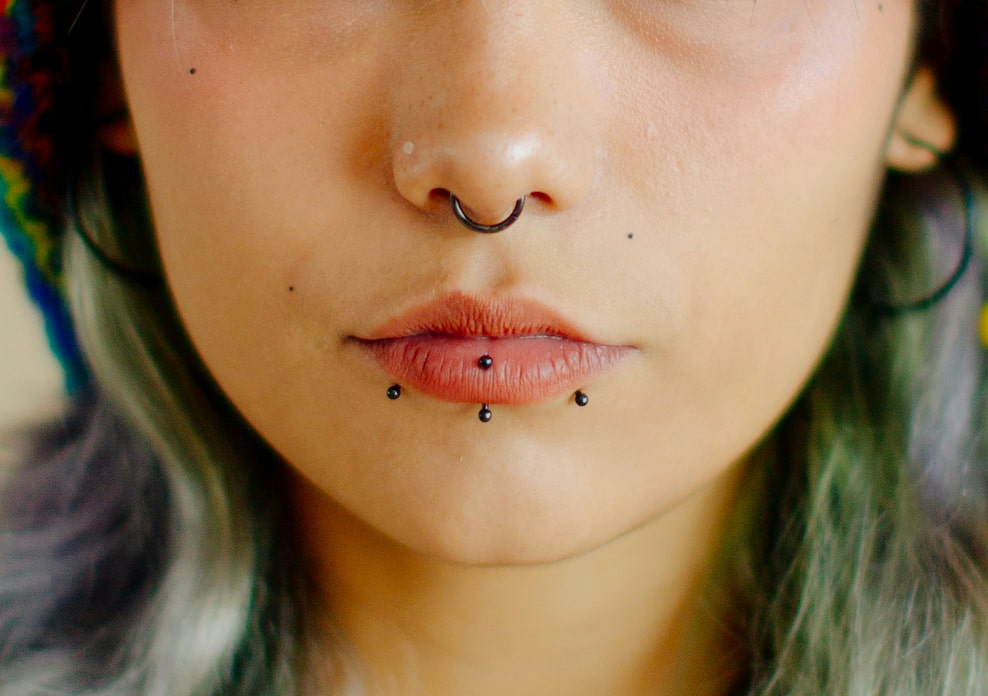Body jewelry can add a touch of personal style and elegance but keeping it clean is crucial for both appearance and hygiene. Whether you're sporting a subtle nose ring or a bold belly button piercing, proper cleaning not only enhances its shine but also reduces the risk of infection and irritation of the piercing site.
In this guide, we'll explore the various materials used in body jewelry, walk you through five methods on how to clean body jewelry, and share some essential maintenance tips. Join us and learn how to keep your pieces sparkling and safe to wear.

Before we delve into the specifics of how to clean piercing jewelry, it's crucial to first understand the materials used in your pieces, as different materials require different cleaning methods. Here are some of the most commonly used materials:

Cleaning body jewelry properly is essential for maintaining its shine and ensuring the health of the piercing site. Here are five easy and effective ways on how to clean nose piercing jewelry, earrings, belly button rings, or other pieces:
A saline solution, which mimics the body's natural salinity, is excellent for cleaning all types of body jewelry, including new piercings. You can either buy a pre-made saline solution from pharmacies or make your own at home. Here's how to clean new piercing jewelry or any other pieces with saline solution:
Suitable For: All types of body jewelry, including new piercings.
What You Need: Commercial saline solution or non-iodized sea salt with warm distilled water
Cleaning Steps:
1.Dissolve 1/4 teaspoon of non-iodized sea salt in one cup of warm distilled water.
2.Soak the jewelry in the saline solution for a few minutes, or use a clean cloth soaked in the solution to gently wipe the jewelry.
3.No need to rinse, just let the jewelry air dry.

The simplest way to clean body jewelry is by using antibacterial soap and warm water. This method is gentle and effective for regular cleaning.
Suitable For: All types of body jewelry, especially for regular maintenance.
What You Need: Antibacterial soap, warm water, a soft-bristled brush, a lint-free cloth.
Cleaning Steps:
1.Mix warm water with a few drops of antibacterial soap.
2.Soak the jewelry in the soapy water for a few minutes.
3.Use a soft-bristled brush to gently scrub the jewelry to remove any dirt or buildup.
4.Rinse the jewelry under clean water.
5.Dry thoroughly with a soft, lint-free cloth.
If you have tongue, cheek, or lip piercings, cleaning with an alcohol-free mouthwash can be effective while avoiding the taste of soap in your mouth.
Suitable For: Oral piercings.
What You Need: Alcohol-free mouthwash.
Cleaning Steps:
1.Pour some mouthwash into a clean container.
2.Submerge the oral jewelry in the mouthwash for 30-60 seconds.
3.Remove and rinse the jewelry under warm water.
4.Dry with a clean, soft cloth.

For metal jewelry that can withstand high temperatures (like surgical steel, titanium, and gold without stones), boiling can be a great way to sterilize.
Suitable For: Metal jewelry such as surgical steel, titanium, and solid gold (without gemstones).
What You Need: Water, pot, heat source.
Cleaning Steps:
1.Bring water to a boil in a small pot.
2.Place the jewelry in the boiling water and let it boil for 5 minutes.
3.Carefully remove the jewelry and let it cool on a clean surface.
4.Dry completely before use.
Using alcohol or hydrogen peroxide can be effective for disinfecting and cleaning non-porous metal jewelry, but it's important to avoid using these chemicals on materials that can be damaged by harsh solvents.
Suitable For: Metal jewelry such as surgical steel, titanium, and solid gold (without gemstones). Not recommended for softer metals like silver or porous materials.
What You Need: Isopropyl alcohol or hydrogen peroxide, cotton balls or Q-tips, a lint-free cloth.
Cleaning Steps:
1.Apply a small amount of isopropyl alcohol or hydrogen peroxide to a cotton ball or Q-tip.
2.Gently rub the soaked cotton ball or Q-tip over the jewelry, focusing on areas with visible buildup or tarnish.
3.Once the jewelry is thoroughly cleaned, rinse it under clean, running water to wash off any remaining cleaning agent.
4.Allow the jewelry to air dry completely on a clean, lint-free cloth before reinserting or storing it.
Proper maintenance goes beyond cleaning your body jewelry; it also involves regular care and precautions to ensure the longevity and safety of your adornments. Here are some essential tips to help you maintain your body jewelry effectively:
Maintaining the luster and hygiene of your body jewelry not only enhances its appearance but also extends its lifespan and ensures it is safe to wear. By familiarizing yourself with the materials used in your pieces and following the correct methods on how to clean body jewelry, you can protect both your jewelry and your skin. Additionally, handling with care and regular inspection for damage are crucial maintenance tips to the longevity of your body adornments. Adopt these practices into your routine, and your jewelry will continue to complement your style while keeping your piercings healthy and hygienic.
While rubbing alcohol can effectively disinfect body jewelry, it is not recommended for regular cleaning. Alcohol can be too harsh, potentially causing irritation or damage to certain materials like acrylic, plastic, or anodized jewelry. For regular cleaning, opt for milder solutions like saline or antibacterial soap.
The best way to clean body jewelry depends on the material and type of piercing. For most types of body jewelry, using a saline solution soak or mild antibacterial soap and water is highly effective and safe. For oral piercings, alcohol-free mouthwash is recommended. Ultrasonic cleaners are excellent for intricate designs, while hydrogen peroxide can be used sparingly for metal pieces.
To clean belly piercing jewelry, start by washing your hands with soap and water. Prepare a saline solution by mixing 1/4 teaspoon of non-iodized sea salt into a cup of warm distilled water. Gently clean the jewelry with a soaked cotton swab, then rinse with clean water and dry with a disposable paper towel or air dry.
Discover expert advice on how to buy jewelry and add it to your jewelry collection. Enhance your style or gift your loved ones with the right jewelry pieces.
Read MoreLearn how to solder jewelry with a torch or soldering iron here. Discover tools needed, steps-by-step instructions, safety tips, and troubleshooting advice.
Read MoreLearn how to clean bronze jewelry effectively. Discover the tools, step-by-step instructions, and maintenance tips for keeping your bronze jewelry shining.
Read MoreLearn how to clean gold plated jewelry with this step-by-step guide. Get tips on cleaning frequency, care, and maintenance to keep your pieces sparkling.
Read More